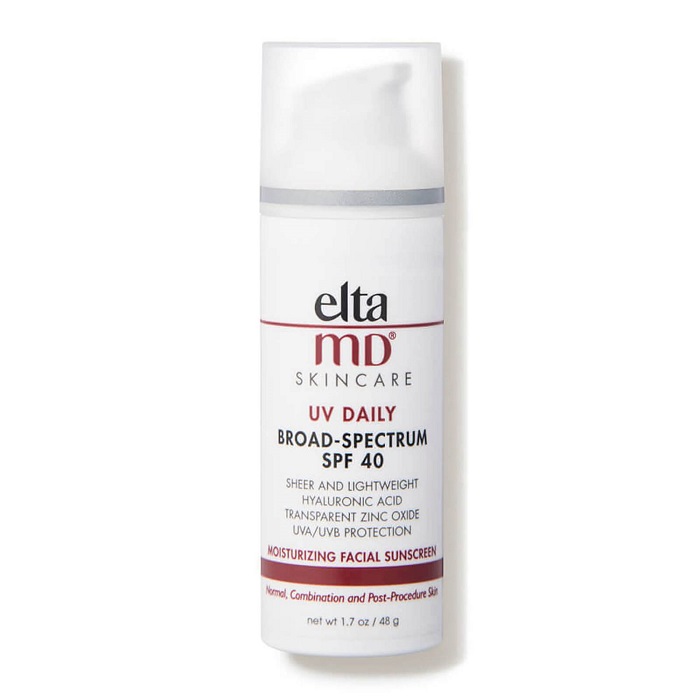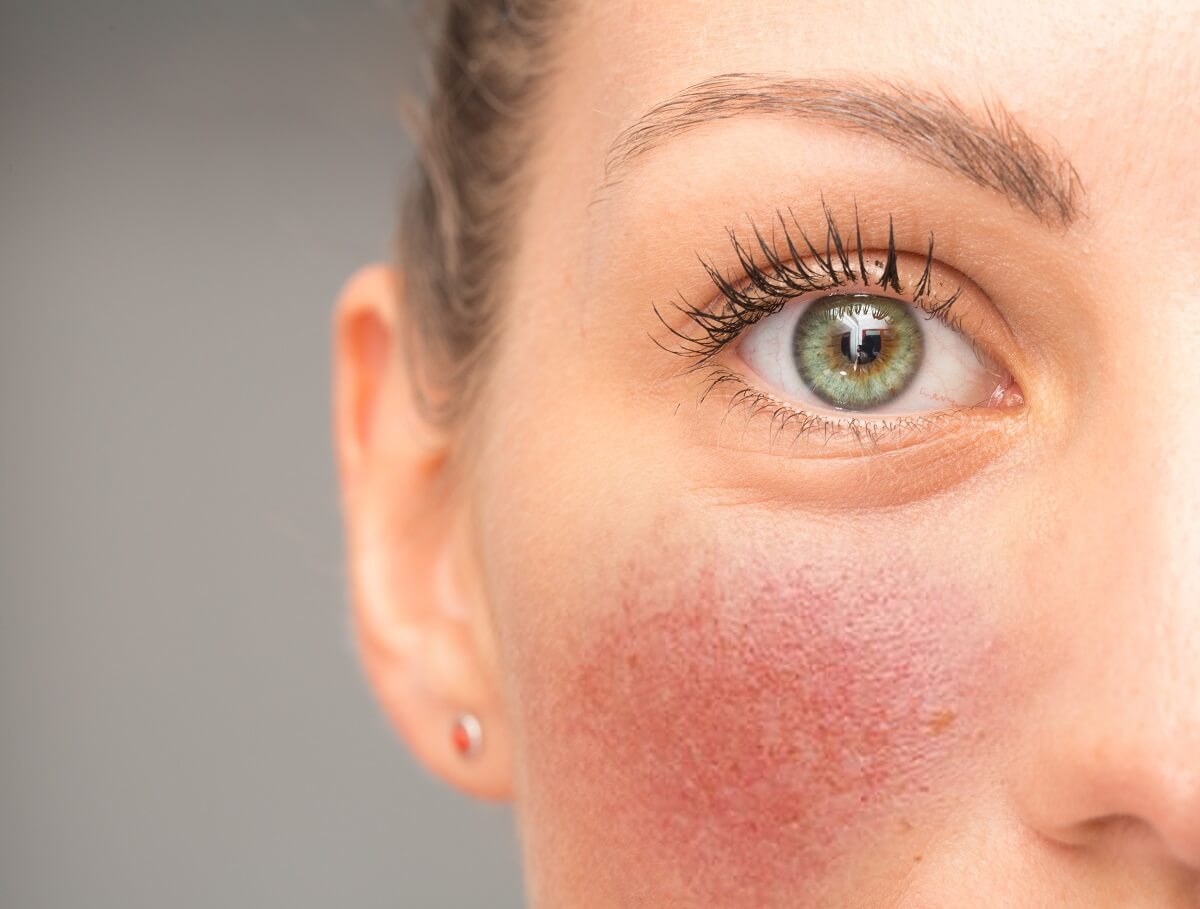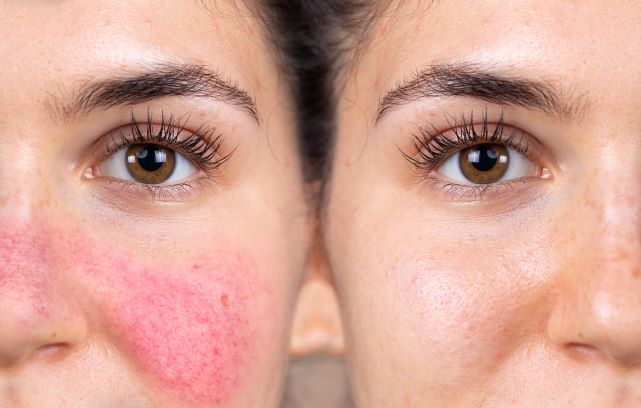April is Rosacea Awareness Month
If you or someone you know has rosacea, you probably have some questions. What is this condition? Why do I have it? How can I get rid of it? There is a lot of misinformation about rosacea. No, it’s not just blushing. No, it’s not caused by drinking coffee or alcohol. No, it doesn’t affect only women. If you’re ready to learn more about rosacea, keep reading below. We’ve put together some of the most important information that you need to understand this common skin condition.
What is Rosacea?
Rosacea is a chronic, treatable skin condition. It most often appears as reddening of the face and neck or highly visible blood vessels, but severe cases can also include skin thickening, bumps, and eye irritation. In addition to these visible indicators of this condition, patients may also experience burning, stinging, swelling, or excessive dryness of the skin. This condition most often impacts women, beginning around the age of 30, but it can appear in men and women at any age. What usually starts out as a tendency to blush easily can develop into much more serious issues without treatment and ongoing maintenance.
Are There Different Types of Rosacea?
Rosacea seems to stem from a genetic irregularity, but not every case of rosacea looks or feels the same.
There are four subtypes:
- Erythematotelangiectatic Rosacea – characterized by reddened skin and visible blood vessels.
- Papulopustular Rosacea – characterized by reddened skin, inflammation, and acne-like breakouts.
- Phymatous Rosacea – characterized by thickening and rough or bumpy skin texture.
- Ocular Rosacea – characterized by irritation, redness, and inflammation in and around the eyes.
What Causes Rosacea?
There is not one specific cause for rosacea, but doctors and researchers have discovered that it may stem from certain genetic traits. Those who have fair skin and family members who have rosacea are much more likely to develop the condition.
What Triggers Rosacea Flare-Ups?
Every person with rosacea should take the time to monitor flare-up days and try to determine what factors seem to impact their skin health.
Some of the most common triggers for rosacea flareups include the following:
- Sunlight
- Stress
- Heat
- Certain foods
- Certain hair and skin care products
- Makeup
- Wind, cold, and other elements
- Medications
- Exercise
How is Rosacea Diagnosed?
In most cases, your general physician will refer to you to a dermatologist if they notice warning signs that you may have rosacea. To confirm a diagnosis, your dermatologist will carefully examine your skin and eyes and ask a series of questions about your symptoms and experiences with the condition, family history, and your own health history. Then, they may want to perform some tests to rule out other conditions, like lupus, that can mimic the appearance of rosacea.
Can Rosacea be Cured?
Rosacea is most likely a genetic anomaly. That means it can’t be cured, but you shouldn’t let this discourage you. If you’re struggling with this condition, there are many steps you can take to prevent flareups and treat more serious side effects.
How Can I Prevent Flareups & Manage Rosacea at Home?
Once you’ve been diagnosed with rosacea, your dermatologist will help you to understand and avoid potential triggers, develop an effective skincare routine, and keep your skin looking and feeling great. According to Dr. Aubrey Chad Hartmann of U.S. Dermatology Partners in Cedar Park, TX., “The first step in rosacea management is proper sun protection on a daily basis. It is also helpful to track your flareups and understand your individual responses to potential triggers.” Your dermatologist can help you to pinpoint your triggers and create a unique prevention plan.

- Sun protection – we really can’t say this enough. Apply sunscreen every day, preferably one that contains the physical barriers zinc and titanium. Rosacea-prone skin is especially susceptible to sun damage, so avoid direct, midday sunlight, wear hats, and seek shade when possible.
- Stress relief – many people notice that increased stress causes a rosacea flare-up. Developing good stress management techniques is very important for people with rosacea. Take a deep breath when you’re feeling stressed and try to stay calm. Finding a good activity to relieve your stress and doing things that make you happy on a regular basis can help.
- Stay cool – we mean this one literally. Try to avoid the heat whenever possible. Plan for breaks during exercise, drink plenty of water, fan yourself, and place a cold cloth on your forehead. Sit far back from heat sources like fireplaces. Wear layers of clothing, so you can remove a piece of clothing if you get too warm.
- Consume foods and drinks cautiously – hot beverages can raise your temperature and the warm liquid can cause your face to heat up, so consume these drinks in moderation. Other foods and beverages may also cause flareups for some patients, but everyone’s triggers are different. Pay special attention when drinking alcohol, eating spicy foods, or when consuming anything you think may have caused a flare-up in the past.
- Protect your skin – wear protective clothing and hats to shield your skin from the elements. Wind, heat, cold, and sunlight can all cause flareups, so keep your skin covered, and avoid spending extended periods of time exposed to the elements.
- Select rosacea-friendly products – makeup, skincare, and even shampoos and conditioners can all trigger flareups. Your dermatologist can help you find great products, but for many people, it’s a simple matter of trial and error to find the right products to limit rosacea flareups.
What Professional Treatments are Available?
Dermatologists have many treatments available for treating rosacea. Several of these effective treatment options are relatively new. Many mild cases are treated simply with topical medications that are applied to the face once or twice a day. In more severe cases, or if there is eye involvement, oral medications (such as antibiotics) are often used. More recently, a low-dose form of doxycycline has been shown to be very effective to treat rosacea. Although doxycycline at high doses is an antibiotic, at low doses it is an anti-inflammatory and therefore its usage does not increase the risk of resistance to antibiotics, change your normal stomach bacteria or increase yeast growth. When individuals have developed permanent redness or visible blood vessels certain laser and light devices can be used to improve appearance. In individuals with rhinophyma (enlargement of the nose caused by chronic inflammation), there are surgical procedures that can reduce the size of the nose.
When Should I Visit the U.S. Dermatology Partners?
At U.S. Dermatology Partners, we are happy to work with patients struggling with rosacea. Our team of skilled professionals looks forward to working with you to develop a plan to achieve optimal skin health and avoid flareups. Treating rosacea early can help prevent unwanted consequences such as enlargement of the nose and permanent redness and visible blood vessels on the face. When you’re ready to get started, take a few minutes to complete our online appointment request form. A team member in your local U.S. Dermatology Partners office will give you a call shortly to schedule your visit.
Find a location near me
or


